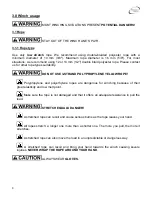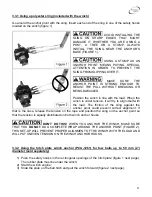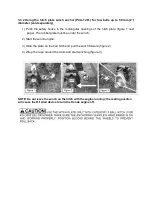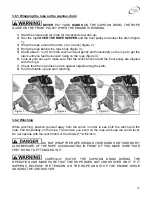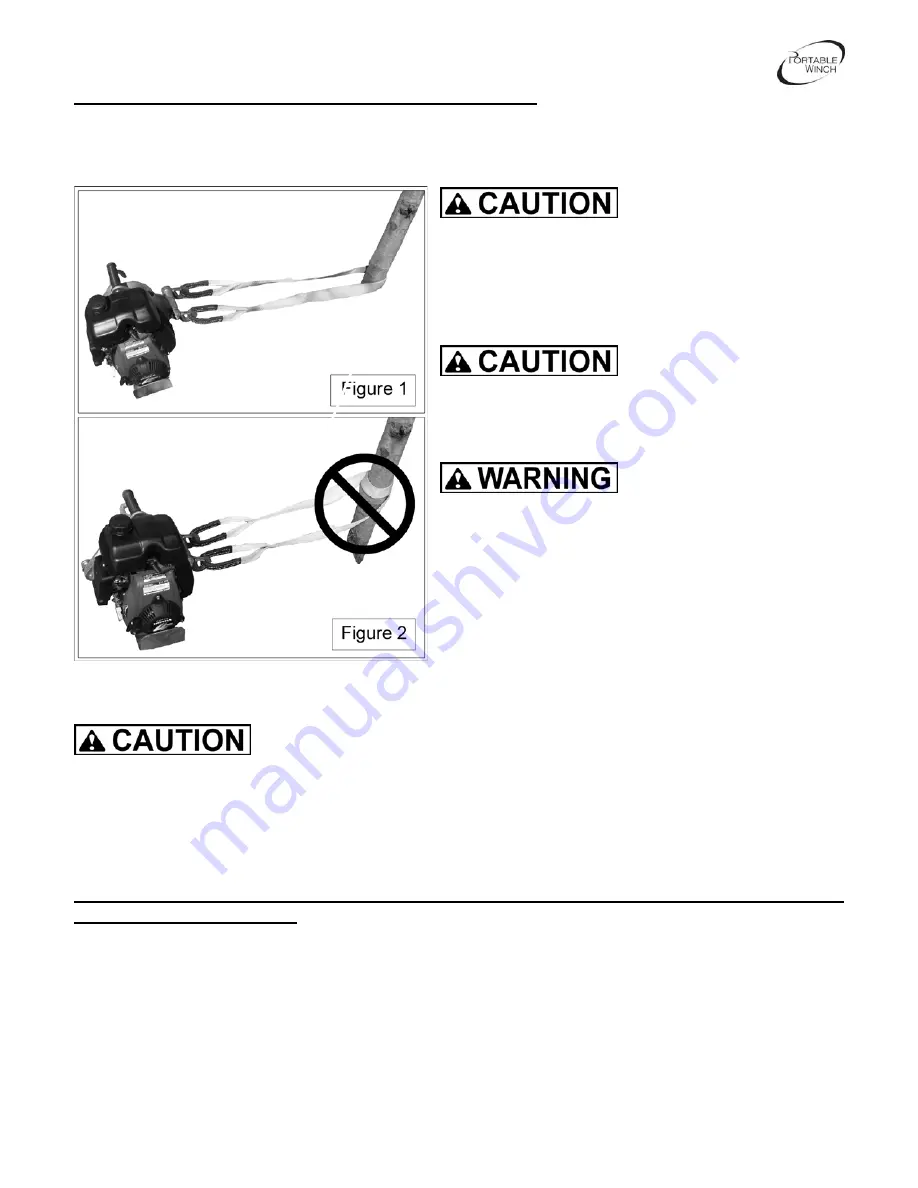
11
3.3.1 Using a polyester sling (included with the winch)
Go around the anchor point with the sling. Insert each end of the sling in one of the safety hooks
located on the winch (figure 1).
AVOID INSTALLING THE
SLING ON SHARP EDGES THAT MIGHT
DAMAGE IT. WHETHER YOU ARE USING A
POST, A TREE OR A STUMP, ALWAYS
INSTALL THE SLING NEAR THE ANCHOR’S
BASE (FIGURE 1).
USING A STUMP AS AN
ANCHOR POINT MEANS PAYING SPECIAL
ATTENTION IN ORDER TO PREVENT THE
SLING FROM SLIPPING OVER IT.
MAKE SURE THE
ANCHOR POINT IS STRONG ENOUGH TO
RESIST THE PULL WITHOUT BREAKING OR
BEING DAMAGED.
Position the winch in line with the load. When the
winch is under tension, it will try to align itself with
the load. The friction of the sling against the
anchor point could prevent correct alignment. If
that is the case, release the tension on the rope and position the sling on the anchor point so
that the tension is equally distributed on both winch anchor hooks.
DON’T DO THIS!
WHEN YOU ANCHOR THE WINCH, MAKE SURE
THAT YOU
DO NOT
DO A COMPLETE WRAP AROUND THE ANCHOR POINT (FIGURE 2).
THIS SET-UP WILL PREVENT PROPER ALIGNMENT OF THE WINCH WITH THE LOAD AND
WILL PUT UNEVEN TENSION ON THE WINCH ANCHOR HOOKS.
3.3.2 Using the hitch plate winch anchor (PCA-1261) for tow balls up to 50 mm (2
''
)
diameter (sold separately)
1) Push the safety hooks in the rectangular openings of the hitch plate (figure 1 next page).
The rubber plate must be under the winch;
2) Start the winch engine;
3) Slide the plate on the ball hitch and pull the winch forward (figure 2 next page);


